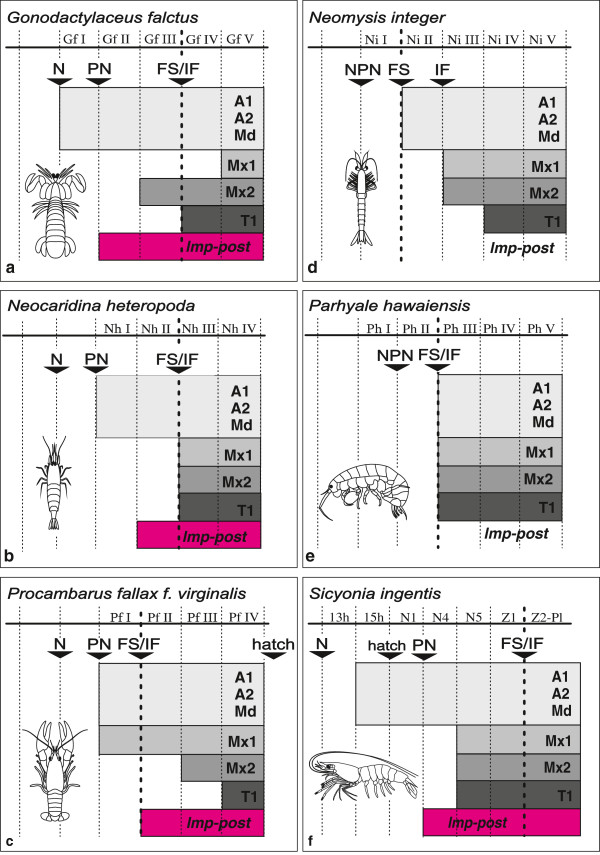Figure 9.
Simplified timeline representation of developmental events. aGonodactylaceus falcatus, bNeocaridina heteropoda, cProcambarus fallax f. virginalis, dNeomysis integer, eParhyale hawaiensis, fSicyonia ingentis. Ontogenetic data on extrinsic appendage muscle development of the naupliar-, first- and second maxilla-, and first thoracopod segments, are combined to four general categories and compared between species. A more detailed comparison of myogenic sequences between species is given in Additional file 2: Figure S2. Extrinsic muscle precursors and posterior longitudinal muscle precursors in the respective semaphoronts are mapped in the sequence they first occur in each species. Categories of extrinsic muscle precursors, namely of the nauplius segments, the first maxilla segment, the second maxilla segment and the first thoracic segment, are shown in specific shades of grey. The posterior pioneer muscle strand (lmp-post) is also mapped (pink). General developmental events (N, PN, FS, IF) are added in the sequence they occur relative to the muscle precursors. FS is marked by a bold vertical dotted line. Regular vertical dotted lines mark the chronological boundaries between all semaphoronts. Abbreviations: Gf (I-IV), Nh (I-V), Pf (I-IV), Ni (I-V), Ph (I-V) species- and semaphoront affiliation, N appendage anlagen in nauplius segments present, PN appendage anlagen in postnaupliar segments present, FS full set of segment anlagen present, IF intersegmental furrows present in entire trunk.

